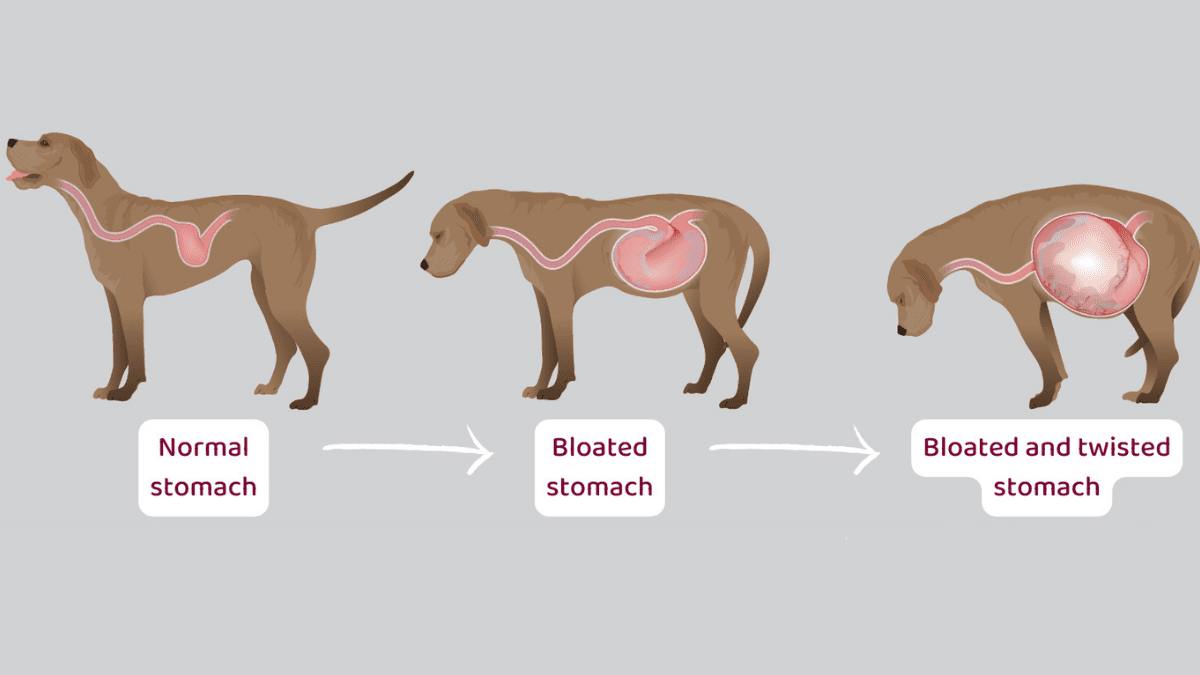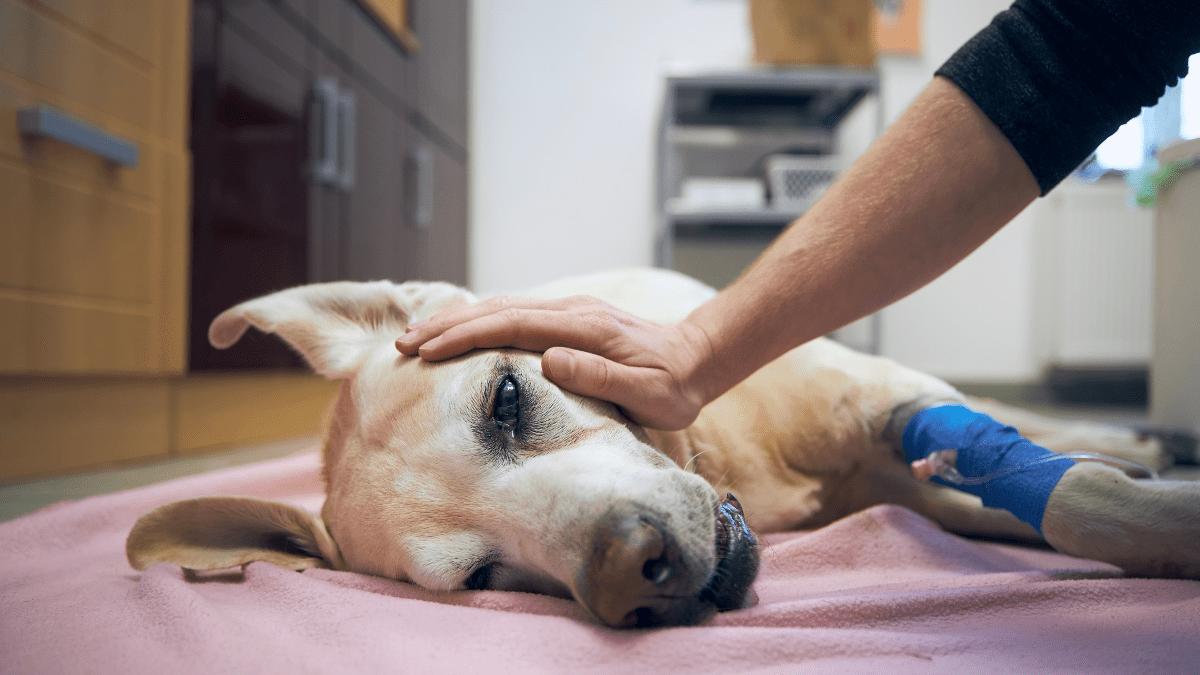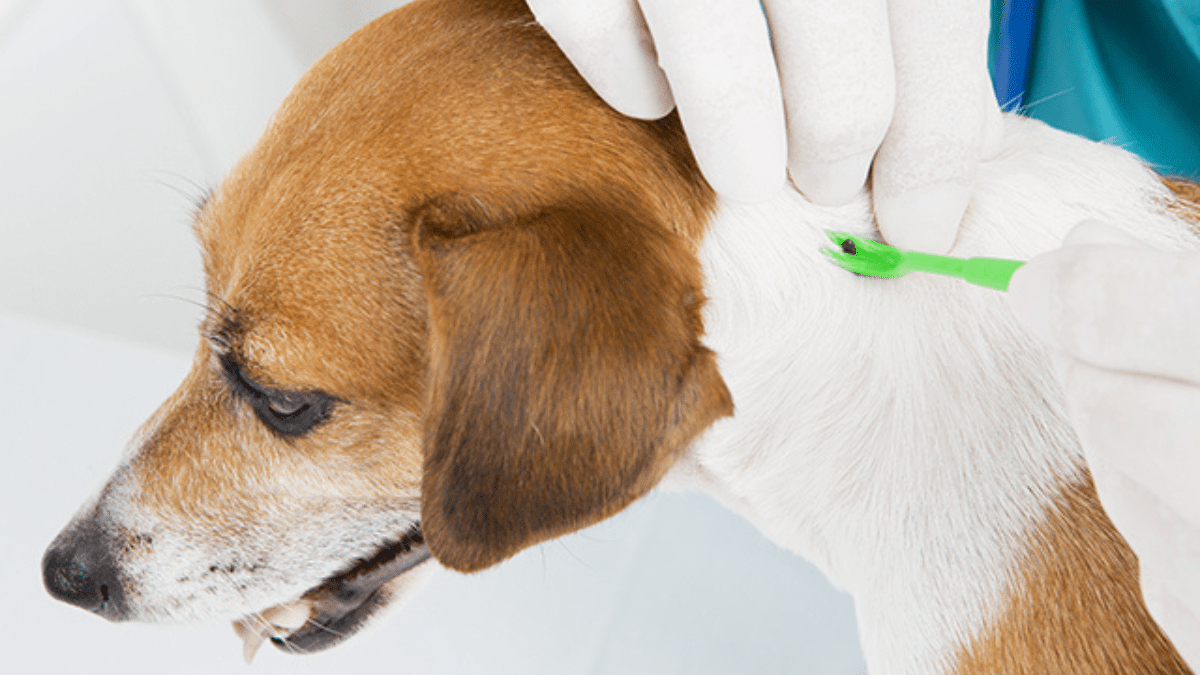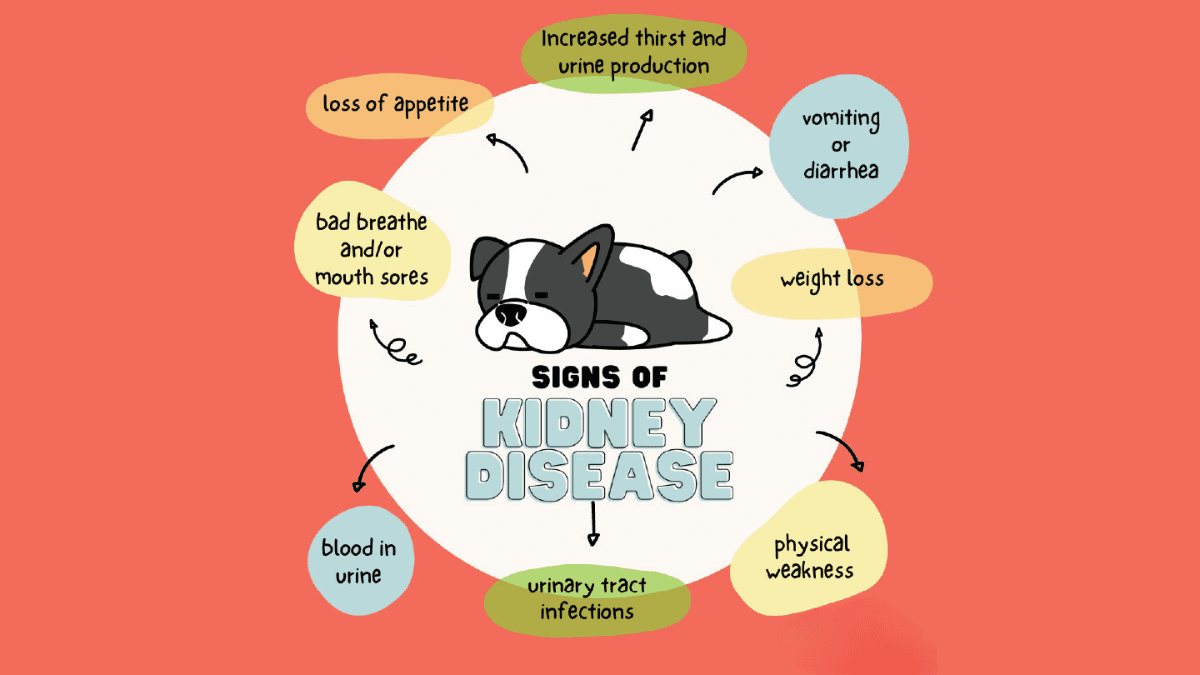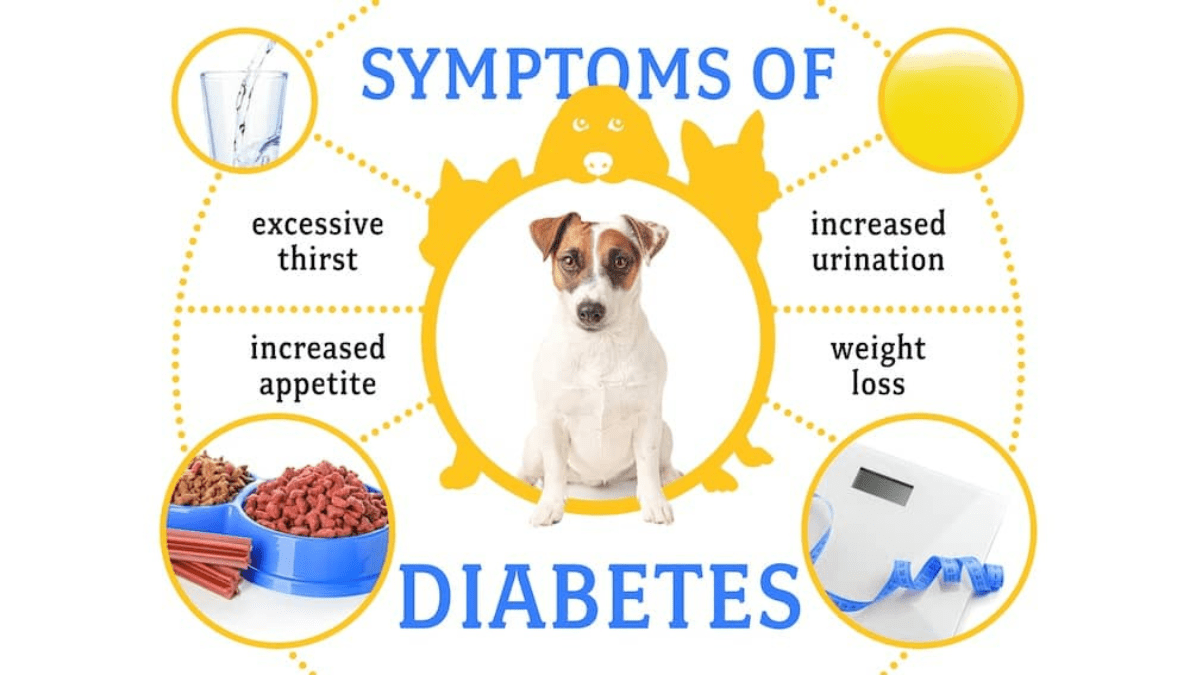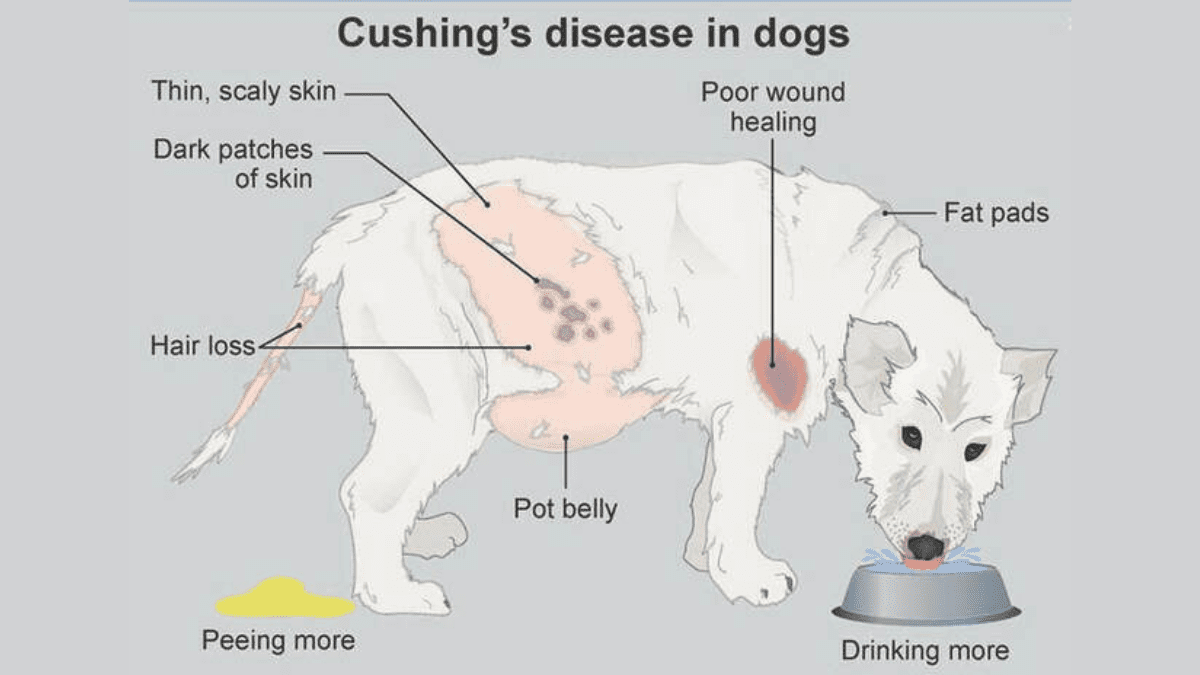Perhaps one of the hardest parts of being a pet owner is determining if your pup is unwell. They don’t have the ability to tell us when something’s off and most dogs don’t show signs of illness until it’s critical.
Unfortunately, we don’t have control over certain health-related problems, which is why it’s important to get educated about these things. Learning about fatal dog diseases could be overwhelming, even worrisome. But it’s actually necessary so you can be aware of the clinical signs and seek expert help as soon as possible. Here are 10 deadly dog diseases you should never ignore to keep your pet in optimum health.
10. Gastric Torsion
Gastric torsion, also known as Gastric dilatation volvulus (GDV) or simply bloat, commonly affects large, deep-chested dogs like St. Bernard, German Shepherd, and Boxer. GDV occurs when the dog’s stomach swells and twists due to gas, fluid, or food. This means bad eating or drinking habits could increase a dog’s risk. GDV can be life-threatening when left untreated and may cause loss of blood flow to the spleen and stomach and add pressure on the diaphragm, which then prevents the lungs from functioning well.
Clinical signs: Swollen abdomen, rapid heartbeat, arched back, restlessness, and pale gums and tongue.
Treatment: Bring your pup to a vet for consultation. Gastric Torsion would require surgery to untwist the stomach and correct its position.
9. Blastomycosis
Blastomycosis is a fungal disease that commonly affects dogs when they get exposed to soil that’s been contaminated by feces and other decaying organic matter. Spores of the Blastomyces fungus cause this disease, and the vet might consider the fungus if a pup has a cough or breathing problems and sores. Dogs who do hunting are at risk since they’re likely to explore contaminated areas. Without treatment, Blastomycosis could be deadly.
Clinical signs: Fever, skin lesions, coughing, depression, and weight loss. Note that dogs may not show these signs for weeks or months after being exposed to the spores.
Treatment: Contact your vet if these symptoms appear. Usually, a drug called itraconazole is given as a treatment that lasts for months. Dogs in poor health condition may not survive.
8. Kennel Cough
This highly contagious respiratory disease is caused by the bacterium Bordetella bronchiseptica. Which is why sometimes, people refer to this disease by calling it Bortadella. Experts say that Kennel Cough isn’t normally dangerous but it could become deadly when the pup develops pneumonia. Dogs with kennel cough would have a persistent, hacking cough and act lethargic. The virus may also cause chronic bronchitis to immunocompromised or senior dogs.
Clinical signs: Sneezing, runny nose, strong cough with a “honking” sound, low fever, and loss of appetite.
Treatment: A vet could provide the exact treatment needed for Kennel Cough, depending on its severity. Mild cases may require rest, good nutrition, and hydration.
7. Lyme Disease
Lyme disease in dogs is caused by a bacterial infection from an infected tick. Most dogs don’t show any sign of illness in the beginning and may appear healthy, making it difficult to catch the disease. As it progresses, a dog may experience joint pain or swelling. When left untreated, Lyme disease can damage the heart, kidneys, and nervous system.
Clinical signs: Lethargy, fever, painful joints, and lameness shifting from one leg to another.
Treatment: Consult your vet if these symptoms appear. Lyme disease can be treated with anti-inflammatories and antibiotics, but there’s a possibility for it to recur.
6. Kidney Disease
There are two forms of kidney disease that a dog could acquire: acute kidney disease and chronic kidney disease. The former is a sudden attack to the organ, while the latter involves a slow loss of kidney function. Usually a dog with kidney disease will have urine that looks cloudy or contains blood. Acute kidney disease may be caused by toxic plants and harmful food like raisins or grapes. Meanwhile, chronic kidney disease is associated with old age.
Clinical signs: Increased urination and thirst, blood in the urine, bad breath, and weight loss.
Treatment: A veterinarian will provide the exact treatment needed depending on the stage of the kidney disease.
5. Diabetes
Diabetes may occur at any age, but dogs between 4 to 14 years old usually get diagnosed with this condition, per American Veterinary Medical Association. A dog with this condition may have an increased appetite because they’re not getting all the glucose their body needs. Experts also claim that diabetes occurs more often in female dogs than in male ones. While dogs with diabetes can live a long life with appropriate care and monitoring, those left untreated could have acidic blood, which might cause coma or death.
Clinical signs: Increased thirst and urination, increased appetite, and weight loss.
Treatment: Contact your vet as they can suggest the best diet for a diabetic dog. Consistent exercise and shots of insulin (injections) may also be considered.
RELATED: 10 Deadly Diseases Your Dog Can Catch From Other Dogs
4. Coccidiosis
Coccidiosis is a gastrointestinal infection caused by the parasite Coccidia, which lives in the wall of your dog’s intestine. Pups can get Coccidiosis by ingesting contaminated water, soil, or feces; the disease could manifest as diarrhea or bloody diarrhea for those with severe infections. Puppies should be tested regularly for this disease as well as older dogs; your vet will need to conduct a fecal test to confirm. A severe case of Coccidiosis may cause death.
Clinical signs: Vomiting, diarrhea, dehydration, and abdominal pain.
Treatment: Contact your vet immediately, especially if there’s bloody diarrhea or frequent vomiting. Antibiotics may be prescribed to treat the disease. In severe cases, repeat treatment is expected as well as other medications like IV fluids.
3. Histoplasmosis
Histoplasmosis is a fungal infection that can affect multiple organs including lungs and gastrointestinal tract. The main cause of this condition is inhalation of mold spores from dust or contaminated soil. This is why working and sporting dogs have a high risk of exposure. The fact that Histoplasmosis has nonspecific symptoms, like fever and lameness, makes it difficult to spot in dogs. Those with multiple organs affected may only survive for a few months to a few years.
Clinical signs: Lack of appetite, fever, difficulty breathing, and bloody diarrhea.
Treatment: Consult your vet for the right medications depending on the severity of the condition and the dog’s overall health condition. Oftentimes, anti-inflammatories are prescribed.
RELATED: 10 Healthy Dog Treats You Can Make At Home
2. Cushing’s Disease
Cushing’s Disease occurs when the pup’s body makes too much of the stress hormone called cortisol. So how do you spot this disease? Usually, a pup with this condition will have an abdomen that looks enlarged due to weakened abdominal muscles.
It’s also worth noting that too much of the hormone cortisol could weaken the immune system and leave your dog vulnerable to infections and diseases, as per the Food and Drug Administration. This is why Cushing’s Disease increases your pup’s risk of acquiring diabetes, another health problem that could be fatal if poorly treated.
Clinical signs: Pot-bellied appearance of the abdomen, hair loss, increased thirst and urination, and reduced activity.
Treatment: Medications will be prescribed by your vet so it’s important to contact them immediately. If a tumor causes the disease, it has to be removed.
1. Canine Pulmonary Fibrosis
Canine Pulmonary Fibrosis is a lung disease that leads to thickening and/or scarring of lungs, making it difficult for a dog to breath. Fibrosis is associated with shortness of breath or open-mouthed breathing in dogs, as well as bluish gums.
Currently, the cause for this disease is unknown. It could be considered highly dangerous since its cause wouldn’t be the focus of the treatment—only its symptoms. However, there are speculations that pulmonary fibrosis is related to hereditary factors and abnormal healing after lung injury.
Clinical signs: Shortness of breath, bluish gums, cough, and lethargy.
Treatment: Consult your doctor when any or all these symptoms appear. Corticosteroids may be prescribed but there’s no proof yet that they could slow the progression of fibrosis. Oxygen supplementation can be used for respiratory distress.
RELATED: Security Footage Reveals How A Cat Eases His Dog Friend’s Anxiety
From The Club
As a pet owner, it’s heartbreaking to see our furry companions suffering from a disease, and even more so from something with an unknown cause like Canine Pulmonary Fibrosis. The silver lining, I guess, is that all the other diseases on this list have certain causes and treatments. While no one wants to be in a position of giving such treatments, it’s important to remember that they could prolong the life of our pets. As always, prevention is better than cure. So from the get go, make sure your pooch is up-to-date with vaccinations and follows a healthy diet to keep deadly diseases at bay.

